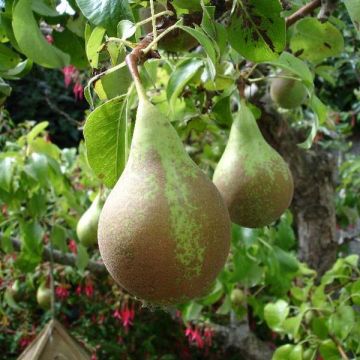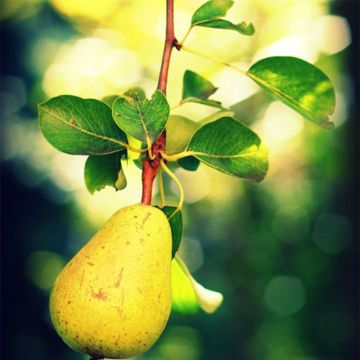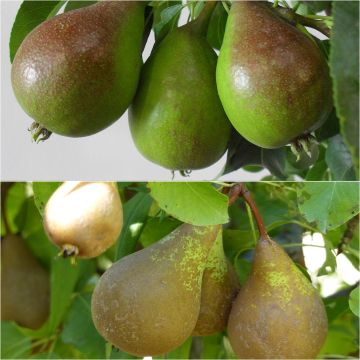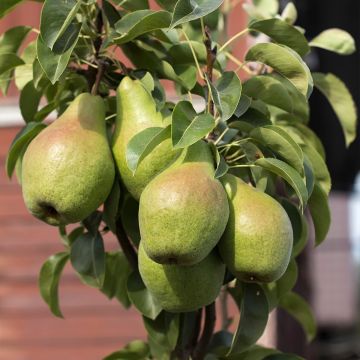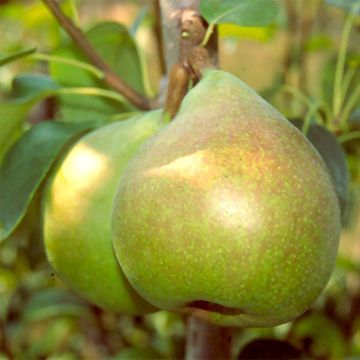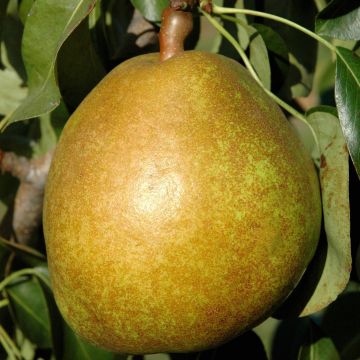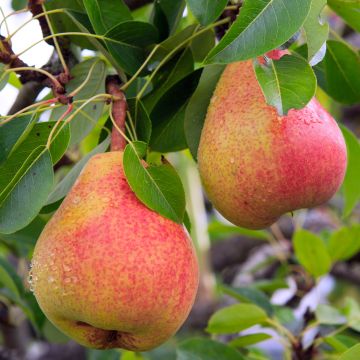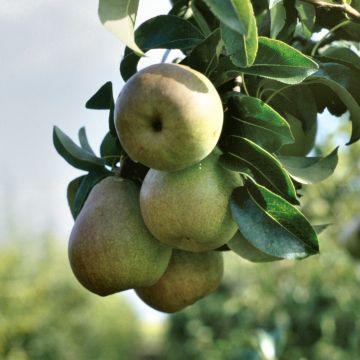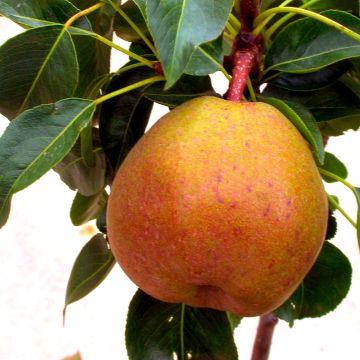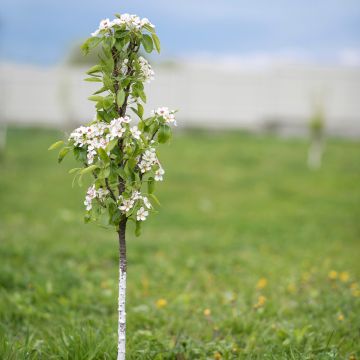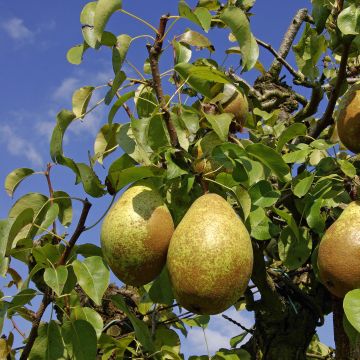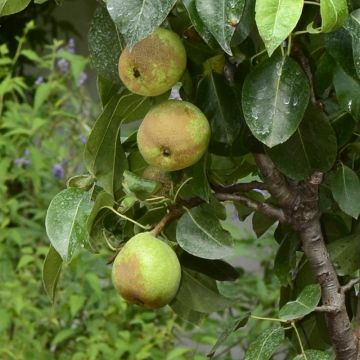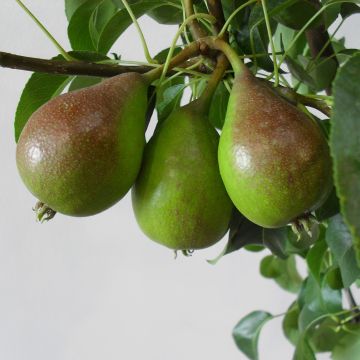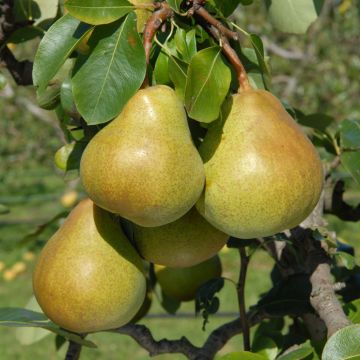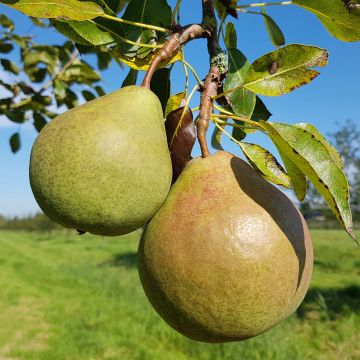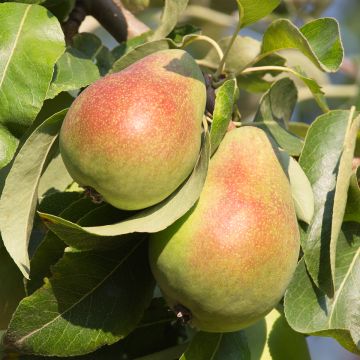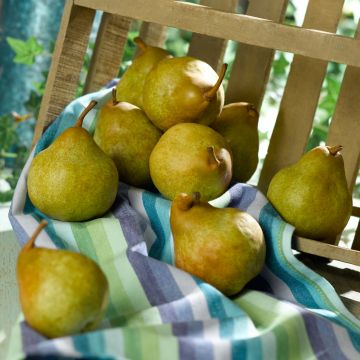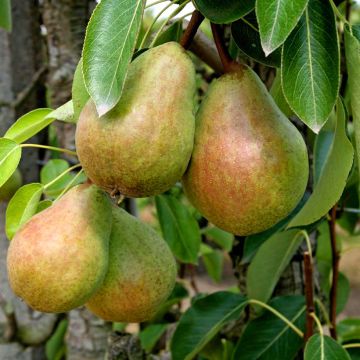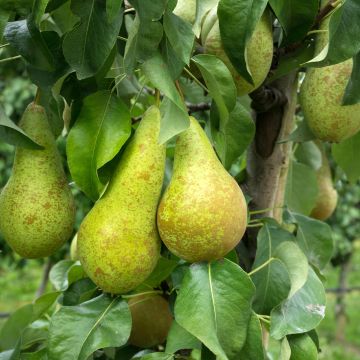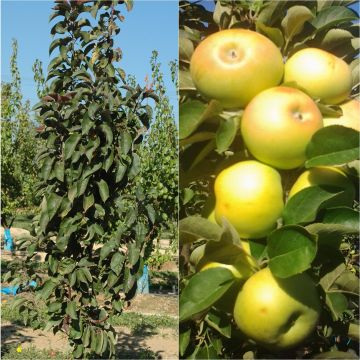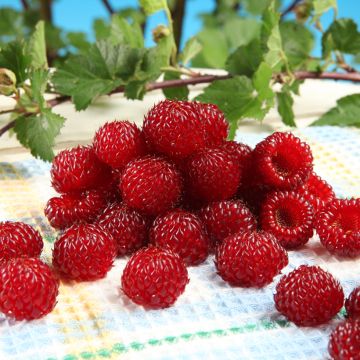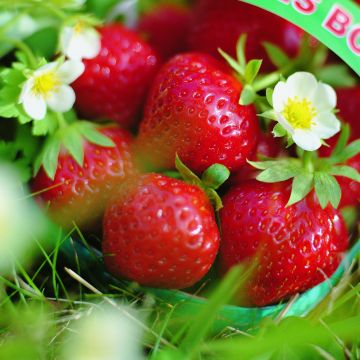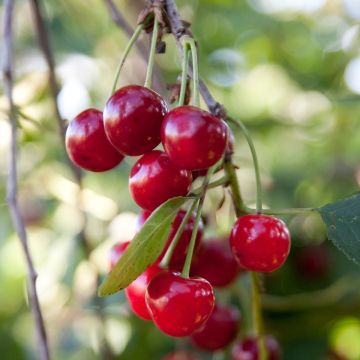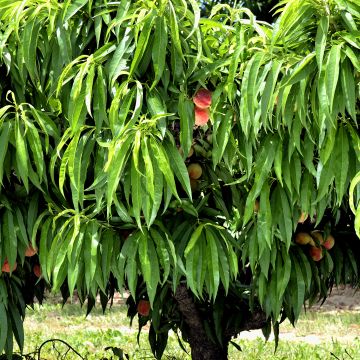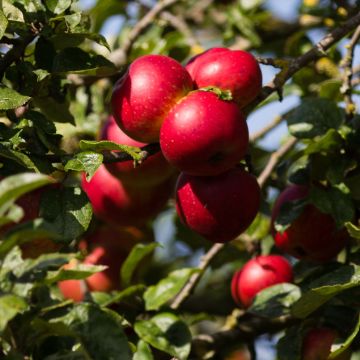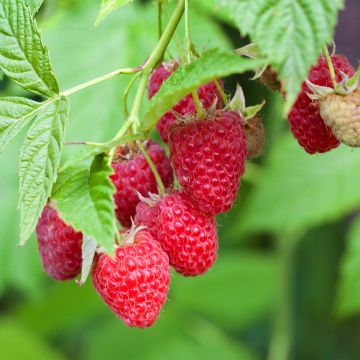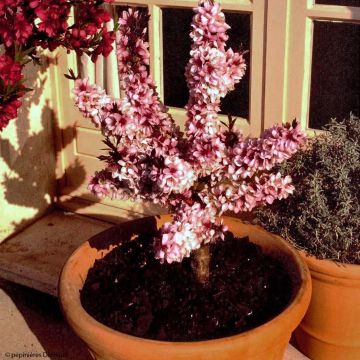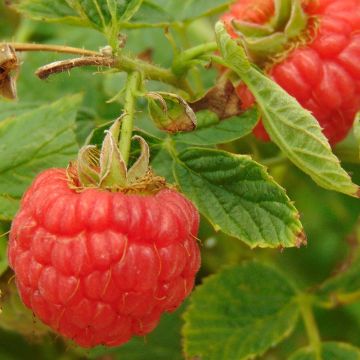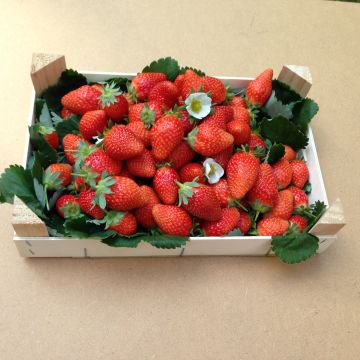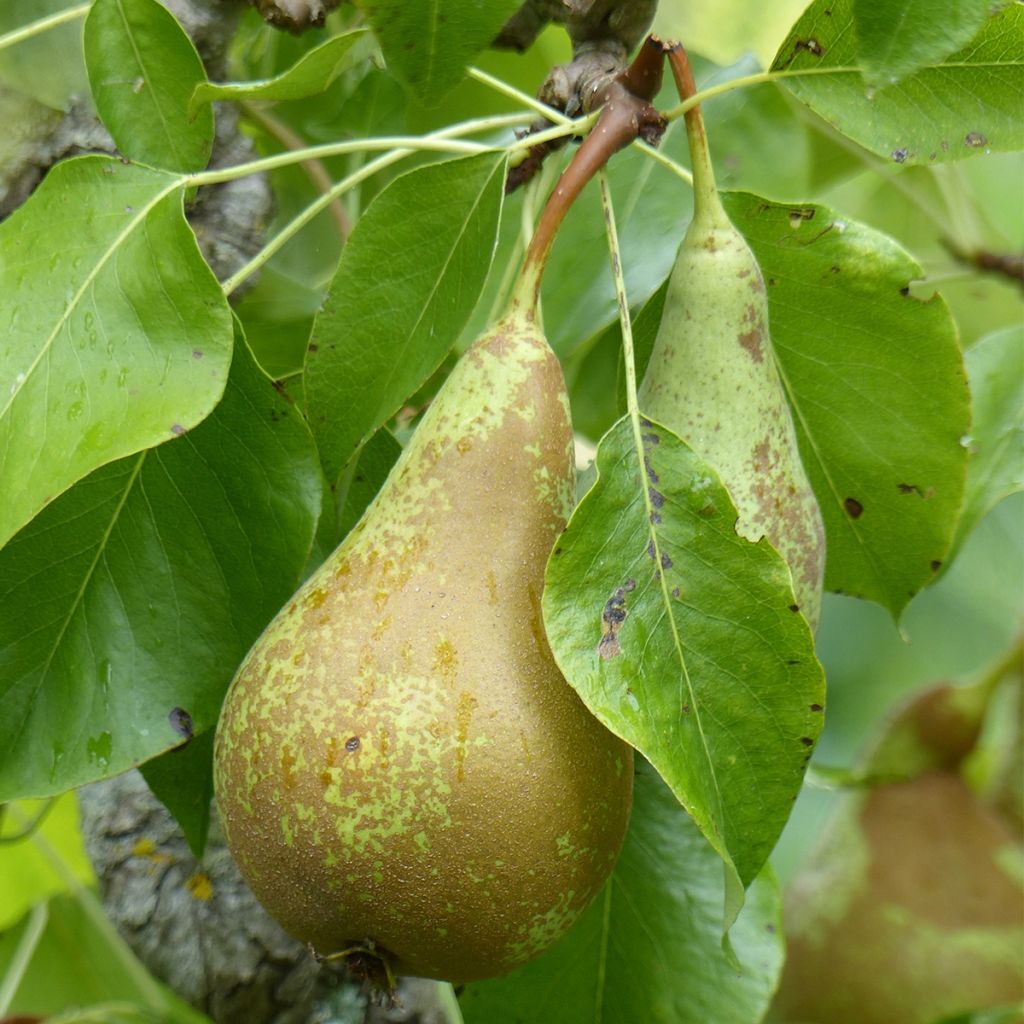

Poirier nain Fruit me Pear me Conférence
Pyrus communis Doyenné du Comice - U Shape Pear Tree
Pyrus communis Fruit Me Pear Me Conférence
Common Pear, European Pear
Why not try an alternative variety in stock?
View all →This plant carries a 6 months recovery warranty
More information
We guarantee the quality of our plants for a full growing cycle, and will replace at our expense any plant that fails to recover under normal climatic and planting conditions.
From €5.90 for pickup delivery and €6.90 for home delivery
Express home delivery from €8.90.
Delivery to Corse prohibited: UE law prohibits the import of this plant from mainland France to Corse as part of the fight against Xylella fastidiosa. Please accept our sincere apologies.
More information
Description
The Fruit Me Pear Me Conference Dwarf Pear Tree is a dwarf version of the famous Conference pear tree, a fruit tree that adapts to the size of its pot and bears true Conference pears from the first years of cultivation. The fruits have a size comparable to that of regular Conference pear trees, and the plant has the same qualities of robustness and resistance to scab. It can be easily grown in a container on a patio or balcony, as well as in a small garden.
The pears, elongated in the shape of a droplet, will be harvested from September 20th, earlier or later depending on the region. They will benefit from being ripened for a few days to reveal the finesse of their flavor and the melting texture of their flesh. Their skin is light green, irregularly marbled with brown, and then turns golden yellow when fully ripe. The creamy white flesh is sweet, juicy, slightly firm, and slightly granular near the core. Harvested two weeks before ripeness, they will keep very well in a cool, but frost-free and ventilated place, until January. This partially self-fertile variety will be more productive in the presence of a William Bon-Chrétien Pear Me Pear Tree.
The pear tree or Pyrus communis Fruit Me Pear Me Conference is part of a series of semi-dwarf fruit trees that are quite revolutionary, recently developed in Spain. All the fruit trees in this range are grafted using a special technique on a state-of-the-art rootstock that adapts to the available volume of soil while allowing for high-quality fruiting from the first years of cultivation. The Fruit Me range of trees is also easy to grow, hardy, reliable, and less susceptible to diseases.
The pear tree is native to central Asia and has been cultivated in China for 6,000 years. It was introduced to Europe around the 6th century. While its development during the Middle Ages remained limited, there were already 200 varieties during the Renaissance. Since then, the number of varieties has continued to increase. These fruit trees have even been developed into dwarf varieties.
While not frost-sensitive when planted in the ground, the Dwarf Pear Me® Conference Pear Tree will appreciate protected and sunny locations, avoiding windy spots. Easy to grow, it likes moist and deep soils, but dislikes excessively draining and chalky soils. In a pot, make sure to protect it from frost by moving your fruit trees to a sheltered location and regularly repotting to renew the potting soil. Adequate watering and fertilisation, using natural fertilisers, should be carefully followed.
The oval-shaped leaves, finely toothed on the edge, have a petiole as long as the lamina. They are red on a green background, and then turn brown in the autumn, very decorative! The late white flowering takes place in April, after the destructive frosts.
This Conference variety produces beautiful yellow speckled pears, very rounded at the base, and the fine, melting flesh is particularly juicy. The sugar balance serves a slightly acidic flavor, making it a good table pear, but it is also suitable for pastry and cooking. The pears can be eaten fresh, in syrup, in pastries, in jams and compotes, and can be used to make alcoholic beverages...
Report an error about the product description
Plant habit
Fruit
Flowering
Foliage
Botanical data
Pyrus
communis
Fruit Me Pear Me Conférence
Rosaceae
Common Pear, European Pear
Cultivar or hybrid
Other Pear trees
Planting and care
Plant the dwarf Pear tree Fruit Me Pear Me® Conference in a sunny location, in preferably acidic or neutral soil, moist but not excessive, or in a pot with a minimum diameter of 40 cm (16in) and a height of 50 cm (20in).
In the ground, dig the planting hole two to three weeks before planting your fruit tree. Dig a hole twice as wide and deep as the pot. On the day of planting, place the tree with its pot in a basin of water, so as to moisten the entire root ball by capillary action. Ensure drainage with a small layer of gravel at the bottom of the hole, add compost, and place the tree in the hole, filling it with a mixture of soil and potting soil. Do not bury the graft union. Firmly tamp down the soil around the base. The root ball should be completely covered. Water thoroughly.
In a pot, choose a sufficiently large container and if it is not already, drill holes at the bottom. Place a layer of clay pellets or gravel for drainage at the bottom. Fill with a mixture of potting soil and garden soil, making sure to leave the graft union above the soil surface. Tamp the soil lightly and water generously. Monitor the watering of your potted fruit trees and apply special fruit tree fertilizer once a year. Repotting should take place in early spring and is essential, but it can be done every two years if the container is large enough. Take the opportunity to change the potting soil and prune any dead roots.
Planting period
Intended location
Care
This item has not been reviewed yet - be the first to leave a review about it.
Fruit trees for small gardens
Haven't found what you were looking for?
Hardiness is the lowest winter temperature a plant can endure without suffering serious damage or even dying. However, hardiness is affected by location (a sheltered area, such as a patio), protection (winter cover) and soil type (hardiness is improved by well-drained soil).

Photo Sharing Terms & Conditions
In order to encourage gardeners to interact and share their experiences, Promesse de fleurs offers various media enabling content to be uploaded onto its Site - in particular via the ‘Photo sharing’ module.
The User agrees to refrain from:
- Posting any content that is illegal, prejudicial, insulting, racist, inciteful to hatred, revisionist, contrary to public decency, that infringes on privacy or on the privacy rights of third parties, in particular the publicity rights of persons and goods, intellectual property rights, or the right to privacy.
- Submitting content on behalf of a third party;
- Impersonate the identity of a third party and/or publish any personal information about a third party;
In general, the User undertakes to refrain from any unethical behaviour.
All Content (in particular text, comments, files, images, photos, videos, creative works, etc.), which may be subject to property or intellectual property rights, image or other private rights, shall remain the property of the User, subject to the limited rights granted by the terms of the licence granted by Promesse de fleurs as stated below. Users are at liberty to publish or not to publish such Content on the Site, notably via the ‘Photo Sharing’ facility, and accept that this Content shall be made public and freely accessible, notably on the Internet.
Users further acknowledge, undertake to have ,and guarantee that they hold all necessary rights and permissions to publish such material on the Site, in particular with regard to the legislation in force pertaining to any privacy, property, intellectual property, image, or contractual rights, or rights of any other nature. By publishing such Content on the Site, Users acknowledge accepting full liability as publishers of the Content within the meaning of the law, and grant Promesse de fleurs, free of charge, an inclusive, worldwide licence for the said Content for the entire duration of its publication, including all reproduction, representation, up/downloading, displaying, performing, transmission, and storage rights.
Users also grant permission for their name to be linked to the Content and accept that this link may not always be made available.
By engaging in posting material, Users consent to their Content becoming automatically accessible on the Internet, in particular on other sites and/or blogs and/or web pages of the Promesse de fleurs site, including in particular social pages and the Promesse de fleurs catalogue.
Users may secure the removal of entrusted content free of charge by issuing a simple request via our contact form.
The flowering period indicated on our website applies to countries and regions located in USDA zone 8 (France, the United Kingdom, Ireland, the Netherlands, etc.)
It will vary according to where you live:
- In zones 9 to 10 (Italy, Spain, Greece, etc.), flowering will occur about 2 to 4 weeks earlier.
- In zones 6 to 7 (Germany, Poland, Slovenia, and lower mountainous regions), flowering will be delayed by 2 to 3 weeks.
- In zone 5 (Central Europe, Scandinavia), blooming will be delayed by 3 to 5 weeks.
In temperate climates, pruning of spring-flowering shrubs (forsythia, spireas, etc.) should be done just after flowering.
Pruning of summer-flowering shrubs (Indian Lilac, Perovskia, etc.) can be done in winter or spring.
In cold regions as well as with frost-sensitive plants, avoid pruning too early when severe frosts may still occur.
The planting period indicated on our website applies to countries and regions located in USDA zone 8 (France, United Kingdom, Ireland, Netherlands).
It will vary according to where you live:
- In Mediterranean zones (Marseille, Madrid, Milan, etc.), autumn and winter are the best planting periods.
- In continental zones (Strasbourg, Munich, Vienna, etc.), delay planting by 2 to 3 weeks in spring and bring it forward by 2 to 4 weeks in autumn.
- In mountainous regions (the Alps, Pyrenees, Carpathians, etc.), it is best to plant in late spring (May-June) or late summer (August-September).
The harvesting period indicated on our website applies to countries and regions in USDA zone 8 (France, England, Ireland, the Netherlands).
In colder areas (Scandinavia, Poland, Austria...) fruit and vegetable harvests are likely to be delayed by 3-4 weeks.
In warmer areas (Italy, Spain, Greece, etc.), harvesting will probably take place earlier, depending on weather conditions.
The sowing periods indicated on our website apply to countries and regions within USDA Zone 8 (France, UK, Ireland, Netherlands).
In colder areas (Scandinavia, Poland, Austria...), delay any outdoor sowing by 3-4 weeks, or sow under glass.
In warmer climes (Italy, Spain, Greece, etc.), bring outdoor sowing forward by a few weeks.

































